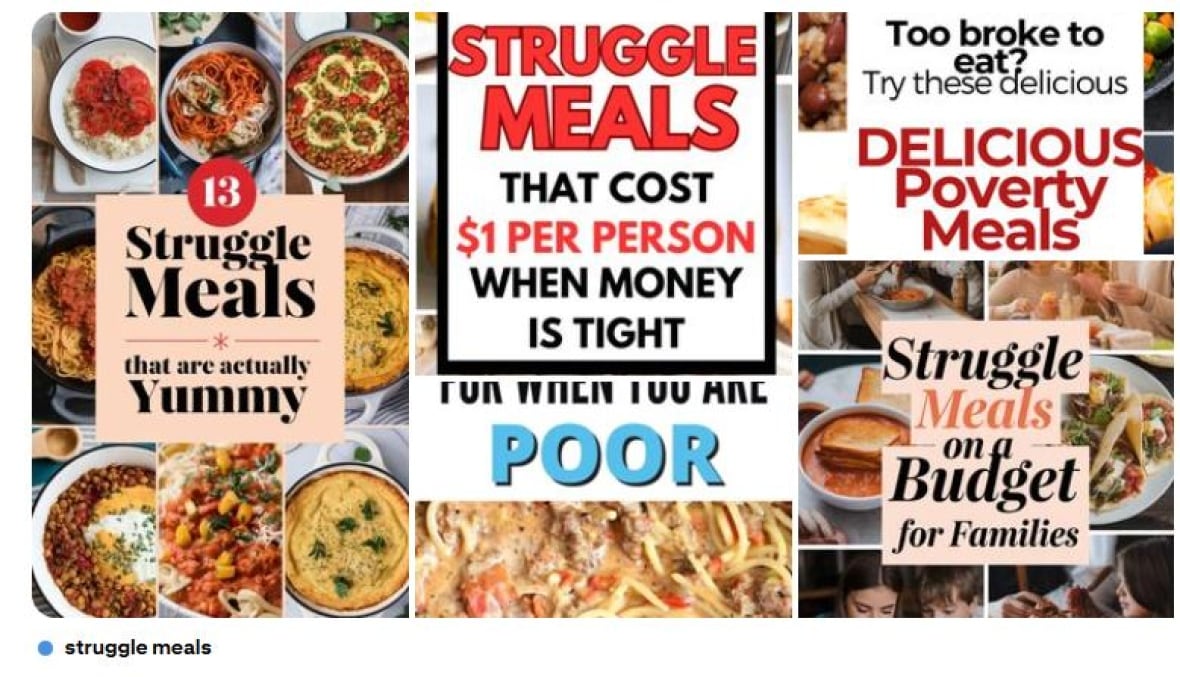Hamburger helper. Instant ramen. Tuna noodle casserole.
We’re in the midst of a dinner throwback era, but unlike wide-legged jeans and the resurgence of DVDs, this trend has nothing do with nostalgia.
So-called “struggle meals” are trending right now as consumers grapple with the high price of food and seek affordable meal options. It’s a new term for an old solution — struggle meals are inexpensive and simple, often made from cheap items or what might already be in your pantry.
“Thirty cent ramen packs are pretty easy to dress up,” suggested someone on the popular Cooking subreddit recently.
“It would not be a poverty meal without octo-dogs,” said one TikToker, describing plain hot dogs cooked in an octopus shape, in a “poverty potluck” video that drew 5.7 million views.
“The classic ‘struggle meal’ that’s really very delicious!” a food blogger wrote, describing her tuna noodle casserole recipe.
And people appear to be increasingly turning to some old budget-friendly favourites.
For instance, Hamburger Helper — the boxed pasta dish launched in 1971 — recently revealed its sales are up 14.5 per cent in the U.S. compared to last year. In a Sept. 16 news release, its parent company Eagle Foods said the resurgence is due to the same market conditions that helped launch Hamburger Helper in the first place: “high inflation, rising beef prices, unemployment concerns and increasing demands on multi-earner households.”
Also in the U.S., sales of boxed dried macaroni and cheese increased 2.4 per cent year over year in early September, according to data provided to CBC News by the research firm Circana. Sales of dry dinner mixes (add your own meat) increased three per cent, sales of prepared chili increased 3.7 per cent, and sales of dry rice increased 7.4 per cent
In Canada, sales of packaged frozen and dry food goods such as canned fish, beans, rice, pasta, and frozen meats and pizzas, have increased by 10.4 per cent between the first quarter of 2023 and 2025, according to Statistics Canada.
“We’re in a time of such incredible uncertainty,” said Elaine Power, a professor in the school of kinesiology and health studies at Queen’s University in Kingston, Ont., who researches issues related to class, food and health.
“Maybe the cute videos give people a bit of comfort that they’re not alone, but it’s a symptom of the growing problem of food insecurity, that people really can’t afford the food that they need,” Power told CBC News.
The rise of the struggle meal
Canada’s annual food price report forecasted that in 2025, overall prices would increase three to five per cent — working out to the average family of four spending $16,833.67 on food in 2025, an increase of up to $801.56 from last year.
In August, Canada’s grocery inflation rate rose 3.5 per cent compared to the same period last year, and Food Banks Canada reported last week that a quarter of Canadians are struggling with food insecurity.
For instance, Food Banks Mississauga said Monday that over half a million visits were made by residents of the Toronto suburb to its locations last year — the highest ever in the organization’s history and a 20 per cent increase from the previous year.
Times are tough, and have been for a few years, says William Huggins, an assistant professor of finance and business economics at McMaster University in Hamilton.
The Canadian economy is weak, he says, plus there’re the ongoing “trade complications” with the U.S. The increase in people drawing on resources like soup kitchens and food banks should be a wake-up call.
“The bottom is falling out of our social safety net and we should be paying attention to these diagnostics rather than just hoping this problem goes away,” Huggins said.
In general, people shift toward cheaper food like pasta and rice when budgets are tight, he says. And they cut back on fresh items like meat, dairy, and imported fruits and vegetables.
Enter the struggle meal.
‘Really perverse’
The term struggle meal has been trending on Pinterest Canada for the past year, especially among users aged 25-34, where some of the most popular pins include “struggle meals on a budget for families,” “35 cheap meals to make when you’re broke,” and “hearty and easy Depression-era meals for today’s budget.”
Searches for “Hamburger Helper” are also trending on the popular platform, peaking just last week.
Google searches for “struggle meals” in Canada also jumped last week, according to Google Trends, especially in Alberta, B.C. and Ontario, while searches for “budget meals” soared in every province.
Even more popular than both those search terms combined was “Hamburger Helper.”

Meanwhile, memes are circulating asking you to rate the “best struggle meal” (mac and cheese vs. ketchup pasta vs. cereal), and people are posting videos with titles like, “Eating like a medieval peasant until my credit cards are paid off, day 14.”
The fact that people have to fill up on foods with little nutritional value is a major concern, Power says.
She points to the recent news story of an Ontario apple orchard that banned backpacks, strollers and wagons after 500 pounds of apples were stolen as another sign that people are desperate.
“Apples have always seemed like such a staple of the Canadian diet, and even they’ve gotten very expensive,” Power said.
“The sad thing is, the more processed the food is, the cheaper it is, the less nutritious it is. It’s really perverse.”
An annual report card from Food Banks Canada has given this country a D after Statistics Canada data showed a 40 per cent increase in poverty in the last two years and one-quarter of households struggling to afford food.
www.cbc.ca (Article Sourced Website)
#Struggle #meals #Hamburger #Helper #trending #food #expensive #CBC #News

